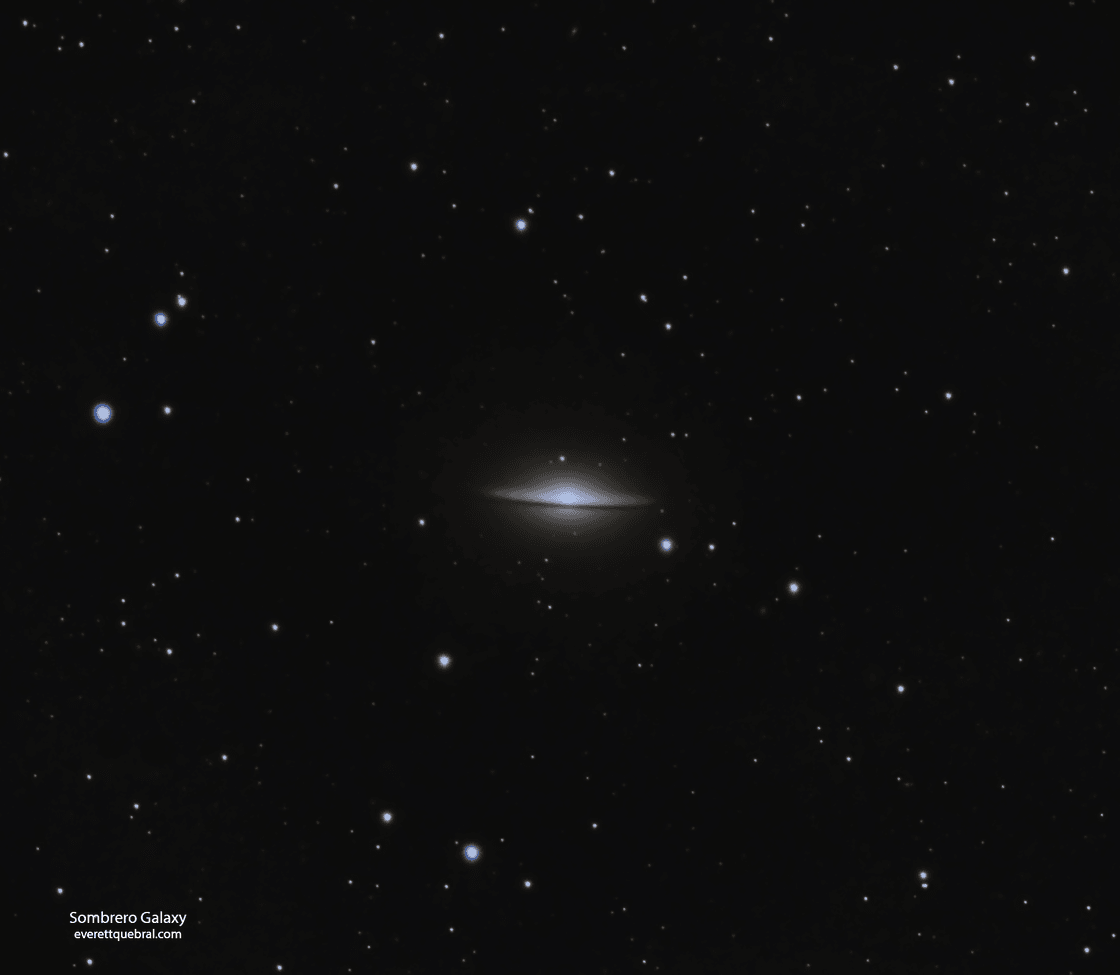Sombrero Galaxy

- Published on

Summary of the Sombrero Galaxy (M104): The Sombrero Galaxy, also known as Messier 104 (M104), is a spectacular spiral galaxy located in the constellation Virgo. Its distinct appearance, with a prominent dust lane resembling the brim of a sombrero hat, makes it a striking object in the night sky. The galaxy's composition includes a central bulge of older stars surrounded by a flat disk containing younger stars, dust, and gas. M104 is approximately 28 million light-years away from Earth and serves as a fascinating subject for astronomical study and astrophotography.
Discovery and Early Observations: The Sombrero Galaxy was discovered by the French astronomer Pierre Méchain in 1781, with Charles Messier later including it in his catalog as Messier 104. Early observations noted its spiral structure and distinctive dust lane, setting it apart as a notable galaxy in the cosmos.
Méchain and Messier's Contributions: Pierre Méchain's meticulous observations of celestial objects, including the Sombrero Galaxy, contributed significantly to the expansion of Messier's catalog and our understanding of deep-sky objects. Charles Messier's cataloging efforts helped astronomers identify and study numerous galaxies, nebulae, and star clusters.
Photographic Era: Advancements in astronomical photography during the 19th and 20th centuries allowed for detailed imaging of the Sombrero Galaxy. Photographic plates and later digital imaging techniques captured the galaxy's spiral arms, central bulge, and dust features with increasing clarity, aiding astronomers in studying its structure and dynamics.
Telescopic Observations: Telescopic observations of the Sombrero Galaxy across various wavelengths, including visible, infrared, and radio, revealed additional layers of information about its stellar populations, gas distribution, and star formation activity. These observations helped astronomers unravel the evolutionary history and interactions within M104's stellar components.
My Observation Experience: Capturing the Sombrero Galaxy firsthand was a rewarding experience that required precision equipment and a passion for astrophotography. Utilizing the 127mm triplet Explore Scientific telescope and ZWO ASI 1600 Monochrome camera with specialized filters, I embarked on capturing the intricate details and structure of M104.
Equipment Used: The astrophotography setup included the 127mm triplet Explore Scientific telescope, renowned for its sharp imaging and detailed resolution. Paired with this telescope was the ZWO ASI 1600 Monochrome camera equipped with filters tailored for capturing the visible and near-infrared light emitted by stars and dust in the Sombrero Galaxy.
Exposure Settings and Processing: Meticulous planning of exposure settings, including exposure time, ISO sensitivity, and temperature control, ensured optimal data acquisition for capturing the Sombrero Galaxy. Advanced processing techniques using PixInsight software allowed for calibration, alignment, and enhancement of multiple exposures to reveal the intricate details and structure of M104's spiral arms and central bulge.
Interpretation and Artistry: Beyond its scientific value, astrophotography of the Sombrero Galaxy allows for artistic interpretation, showcasing the beauty and grandeur of a distant cosmic object. Skilled processing techniques and artistic vision transform raw data into a stunning image that conveys both scientific detail and aesthetic appeal, inviting viewers to explore the wonders of the universe through M104's captivating form.